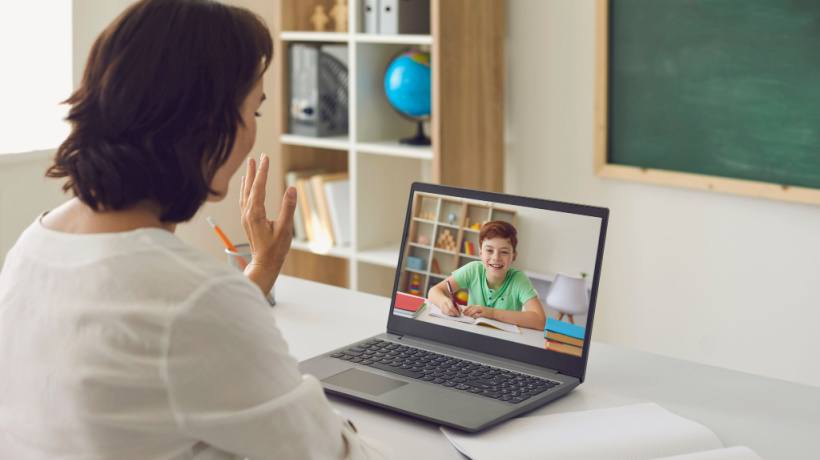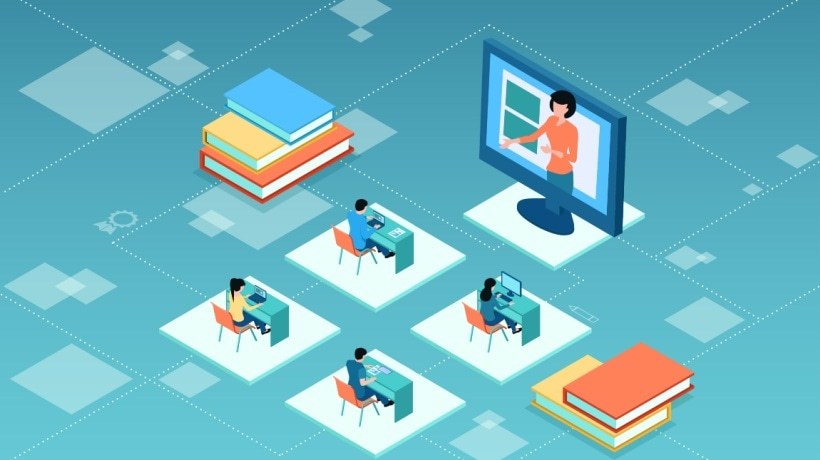Fostering Virtual Student-Driven Engagement For Remote Learning
When it comes to successful teaching—either remote or in-person—student engagement is the name of the game. Engaged students are motivated to take accountability for their progress by participating, completing assignments, and studying independently outside class. However, when we talk about engagement, we usually think about what teachers can do to promote it. In this article, we talk about the other side of the coin, which is virtual student-driven engagement. Let's see what makes it different and how you can promote it in your (virtual) classroom.
Types Of Student Engagement
Most educators aim for teacher-driven engagement. It is a very popular teaching method, and one that educators and learners alike have grown to expect. However, moving forward into the future of learning, researchers are finding that putting control back in the hands of students might be even more effective. But what sets student-driven engagement apart from teacher-driven? While the former focuses on fostering a relationship between the student and the educator and building high-energy lectures, the latter aims to build collaborative settings, give roles and responsibilities to students, and help them develop using increasingly challenging tasks.
5 Ways To Promote Student-Driven Engagement
Now that we know what it is, let's look at 5 ways you can encourage your students to implement student-driven engagement.
1. Encourage Collaborative Activities
During team activities, students get the opportunity to move away from the traditional classroom interaction that is limited between the educator and the learner. Instead, they get to collaborate with their peers in a setting that demands little to no intervention from the teacher. All the educator has to do is divide the class into small groups, give minimal pointers, and let learners make academic discoveries and learn through creativity and teamwork. You can further help students cultivate their autonomy by assigning them roles and responsibilities. For example, instead of relying on you to check their work and provide answers, you can empower them to check each other's work, encourage equal participation, and turn to each other to find answers to their questions.
2. Set Clear Goals And Expectations
Although student-driven engagement allows teachers to take a step back, that doesn't mean that their contribution doesn't remain important. For students to take the lead, they must know what they are working towards. Therefore, it's important for teachers to set clear learning goals that demonstrate which skills students are expected to have acquired by the end of the lesson. If your students are younger, it would be helpful to break down the final goal into smaller achievements that would function as guidelines. Once you have created a clear and comprehensible framework, you're ready for the next step.
3. Promote Student Accountability
Having clear goals in mind, students can collaborate to achieve each intermediate milestone by combining their skills and existing knowledge. The freedom of learning through personal discovery and not passive listening not only motivates students but also helps them understand concepts more thoroughly. As learners become more acquainted with the goal-setting process, they can even start creating a goal structure themselves, thus taking real ownership over their learning progress. This way, their development becomes a personal matter they genuinely care about rather than a mindless process of completing tasks with no purpose.
4. Utilize Productive Struggle
Boredom is a factor that can greatly affect learner engagement and subsequent progress. A common cause of boredom is the use of unchallenging learning content that doesn't invite students to push their academic boundaries. Therefore, educators who aim to foster student-driven engagement often utilize productive struggle. In other words, they assign learners progressively difficult tasks that, at their final stages, stretch beyond their current abilities. Thus, students must explore brand-new thinking avenues and make the most of their collective skills to reach an answer. Although it might be hard, try not to intervene and help out. This technique will boost your students' self-confidence and make them more creative in the future.
5. Monitor Progress And Make Adjustments
Even though your students might seem engaged in the learning process, it's important to assess whether this translates into better performance. Keep track of your students' self-tracking data and compare it to their actual work. Do they coincide, how fast are they achieving their goals, and which activities are bringing in the best results? Remember to check this data at regular intervals to make sure that your students are not only having fun but also learning. A solid assessment plan makes it easier for you to know what's working and make adjustments when necessary.
Conclusion
As teaching becomes more learner-centric, educators are looking for new ways to motivate their students. In this article, we talked about student-driven engagement and how educators can boost learner performance by allowing students to lead the way. Use the tips we shared to implement it in your (virtual) classroom and see for yourself the benefits of a classroom that actively takes control of the learning process.








